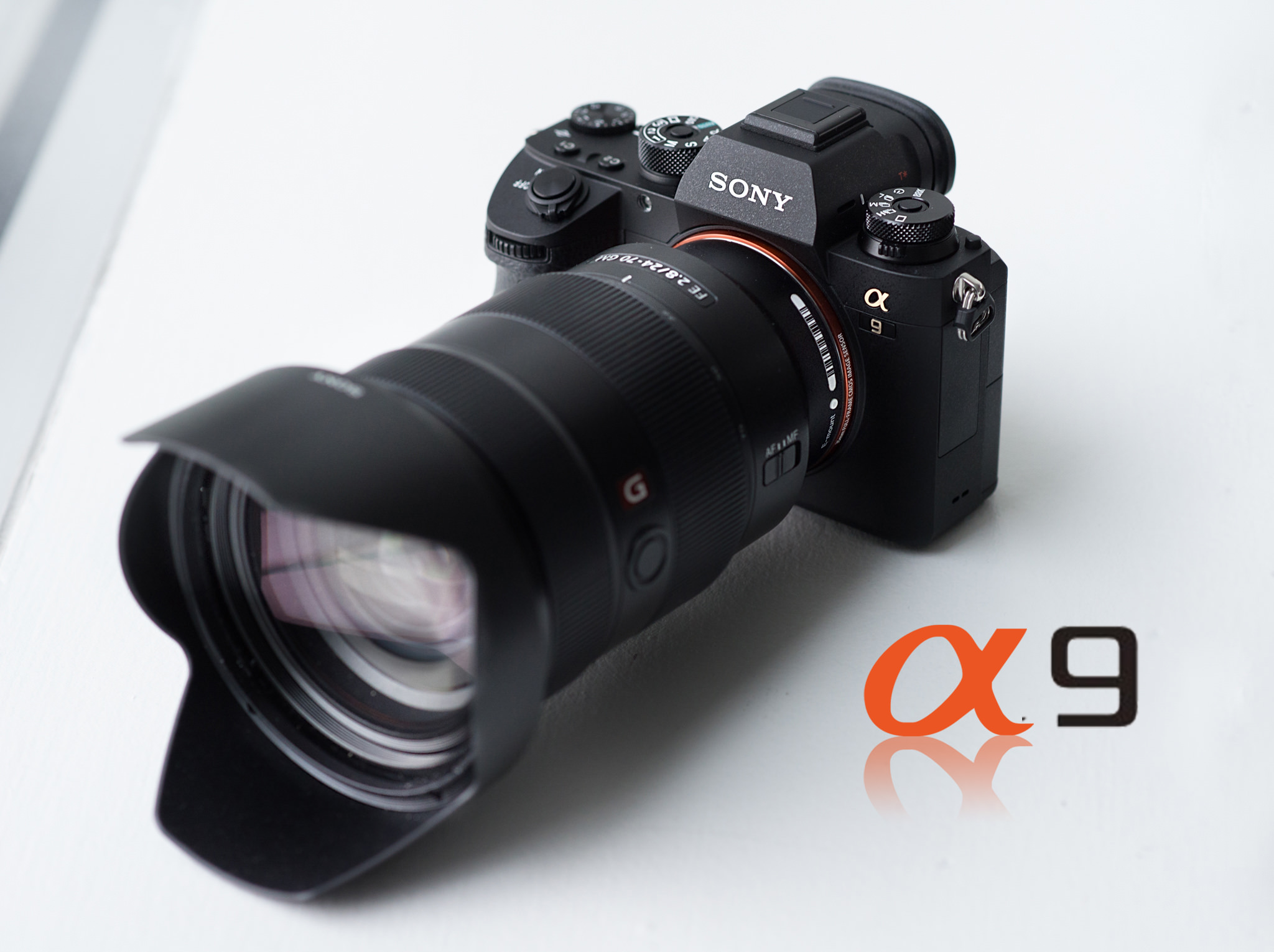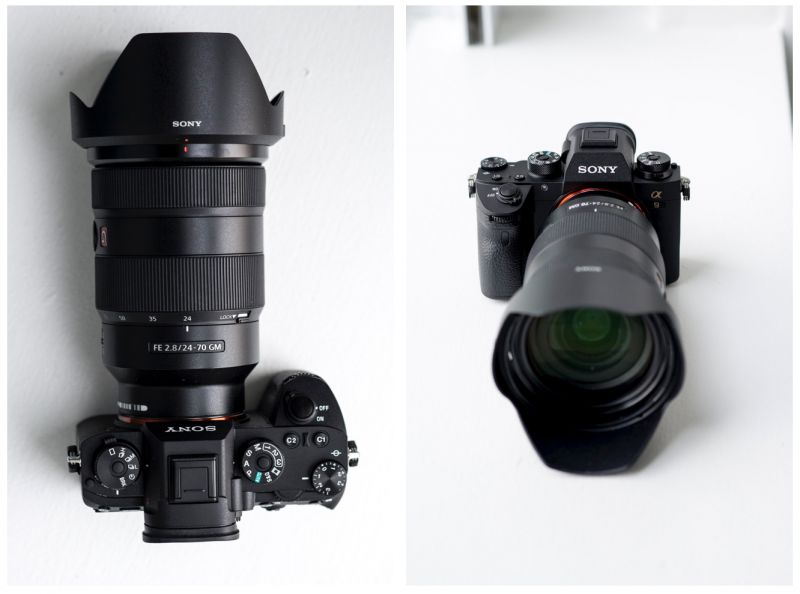
So, this, is the Sony A9. It costs twice as much as most people’s mortgage, looks very much like the A7 you’ve got now, has a rubbish touch screen, and, if you’ve got fists of ham and fingers of sausage it may not be the most comfortable piece of kit. In addition, while the buffer limit is around 200 shots compressed, only one of its card slots is UHS-II. That’s problematic because a full buffer then, takes minutes to offload, not seconds, and you lose playback and menu functionality during that time.
So some design decisions are a bit cruel and confusing by Sony, but here’s the thing; focusing on that when looking at it as a whole is kind of like declining a date with Mila Kunis because her handwriting’s a mess – you’ve lost the plot. While certainly not perfect, thanks to a new sensor, processor, and a myriad of other things, the Sony A9 is (arguably) the most powerful mirrorless camera ever made. Moreover, it becomes clear that what this is, more than anything, is a statement piece.
SONY A9 STILLS SPECS
- World’s First full-frame stacked CMOS sensor, 24.2 MP2 resolution
- BIONZ X Image Processor
- 3.0″ 1.44m-Dot Tilting Touchscreen LCD
- Internal UHD 4K/30p Video Recording
- 120fps all full HD at up to 100Mbps
- Full pixel readout without pixel binning
- Blackout-Free Quad VGA 3.7m-Dot OLED EVF
- up to 20fps for up to 241 RAW/ 362 JPEG images
- Silent, Vibration-free shooting at speeds up to 1/32,000 sec
- 693 point focal plane phase detection AF points with 60 AF/AE tracking calculations per second
- Extensive professional features including Ethernet port for file transfer, Mag. Alloy Dual SD card slots, and extended battery life
- 5-Axis in-body image stabilization with a 5.0 step shutter speed advantage
It’s actually a defining moment in camera history because it is the materialization of the tangible proof-of-concept for mirrorless. That to those who relegated mirrorless to the games-cupboard as a party trick, or thought mirrorless was just about a size advantage, you were wrong. It says to DSLRs, unequivocally, that anything you can do I can do too – or better.
Truly, if you bought mirrorless for the size, you were barking up the wrong tree, as that was never what it was about. The problem though, was that in its infancy when it really wasn’t nearly as good as its more mechanical contemporaries, ‘size’ was the marketing point it was sold under. But those of us in the ‘know’ knew it was just a matter of time before the potential would be realized, and that when it did there would be a shift.
Well, it has, and now the reasons for having a DSLR above a mirrorless are only really there if you squint. If you open your eyes, it would be hard to miss the fact that the DSLR is surpassed in so many ways. Sony, rather hilariously, has figured out a way to take what’s good for you and make it something you want.
At 20 fps the A9 is 1.7x faster than the Nikon D5, 1.5x faster than the Canon 1DX Mark 2, twice as fast as D500, and those are about the best sports cameras in the world.
But that’s really just the tip of the technological iceberg that is the Sony A9. Below the surface, in essentially every scientific and measurable way it’s ahead of the competition. It’ll 3D track as well as any of those cameras even with fast depth changes, and its Eye-AF is the best I’ve ever seen – no, really, it’s actually good enough to trust with tracking your subject without manual-input point movements in all but very low light. Wedding, sports, and event photographers take note.
Then there’s the lack of blackout, which is truly a revelation and a bit weird if I’m honest. When using a traditional mechanical shutter –regardless of how fast it’s moving– you still get a blackout as the shutter opens to reveal the sensor (yes, rangefinders exempt). What that means is that for every deciding and critical moment you’ve ever captured, you’ve never actually seen it as it’s occurring. You see the moment right before and directly after, just not as it happens. Well, that problem is now a thing of the past.
With the A9 there’s just no break in visuals, but as a consequence of how quick and quiet it is there’s no sensory feedback suggesting how many frames you’re through. That’s not a bad thing really, it’s just so far removed from what you’re used to that you let go of the trigger, pull back and think…what the hell just happened? Because that’s what the A9 does to your senses and sense of normalcy – it shifts it forward.
If you really are one looking to capture just the right moment, once you use this there’s no going back. You may love your D500 and your 1DX Mark II, but use this for half an hour and going back won’t feel like going back 30 min, it’ll feel like stepping back 5 years.
Now, a lot of this tech is predicated on the use on an electronic shutter, but there are other benefits of this shutter behavior: The A9 is incredibly quiet and has virtually no vibration. If you’ve ever used a D5 or 1DX you know shooting at speed makes it feel like maybe you need a license to open-carry, and while the 8 year old in you loves it, it’s loud, interrupting of ambiance, and brings with it some shake. Those are non-issues for the A9 because it’s as quiet as a church mouse on Sunday and as far as shake, well, there’s more shake in America’s foreign policy.
It’s brilliant, absolutely brilliant. And if you’ve got your hand on your wallet with a finger hovering over a ‘buy’ button, you can stop reading here because regardless of what I’ll say next, I’ll never begrudge the purchase of this camera. But as someone who is a bit old fashioned, and a realist, I’ve got to say that it’s not perfect, and there’s something missing that you can’t really put a finger on – something that can’t be measured. There’s no…soul?
When you look at its contemporaries like the D5 and 1DX you get the feeling they are shining examples of brands refusing to adapt and re-think things; that they are carry-overs from a time where cameras were designed by smart men with nothing but a cigarette and a slide-rule – relics of the Cold War era.
The A9 though? That feels like it was designed by software and science. There’s no design for design’s sake. There’s no art, no emotion. It’s the kind of camera you imagine is built in a world of matrices by men in white suits who have number tags in place of name tags; a place where you just can’t imagine anyone who worked there had ever sent their co-worker a meme, or even knew what one was.
When you use a D5, 1DX or similar, it’s akin to driving an American stick-shift from the 70’s. It’s all very manual and there’s feedback that you feel, rather than feedback that you read. With the A9, it’s kind of like what I’d imagine controlling a Reaper drone from half a world away is like – a bit removed from the experience. In fact, I’d wager you’d never get emotionally attached to an A9 because it’s all very serious and utilitarian.
That said, you do get the sensation that it’s the embodiment of function over form, and that each design was meticulously decided upon. For instance, a Sony engineer related to me a story about how, after the ‘final’ shutter button was done and one staff member said something unflattering in passing, it didn’t turn out to be the final one after all. And 200 variants later we have this one.
It’s clear they’ve taken this same utilitarian sensibility of approach to design throughout the camera, because Sony hasn’t just given it an amazing feature-set, but they’ve done a lot to help you exploit the A9’s robust firepower. The results make you look better than you are, and make you feel like a hero.
Unlike the other power shooters that are clunky and ungainly, this one is nimble, sharp, and adaptable. If I had to write a dating profile for it, its equivalent to that profile staple ‘as at home in a tux as in jeans‘ would be: ‘as comfortable at a Christening or wedding as at the Olympics‘, and that would be no embellishment. Whereas a D5 and 1DX really feel wasted in some scenarios, the A9 is happy to be your discreet and civilized travel-shooter by day, and your sports superhero by night, all with the turn of a dial.
[REWIND: Sony Announces A9 And 100mm-400mm 4.5-5.6 Super Telephoto Zoom]
So when you think of it as a whole, how good it makes you look, how easy it is to get the best out of, that it’s 1/3 less in price than a D5 or 1Dx Mark II; that it’s smaller, faster, more agile and adaptable, you kind of wonder why you would go for anything else in this space? I mean, those other cameras’ real claims-to-fame are FPS and AF ability; those were the pillars they were built around. Take those crowning achievements away and that’s like taking away the sunshine from a summer holiday in Aruba – you’re left with… not much else to speak of really.
In a sense, you might miss the ruggedness* of the others and the older mechanical feel of things in a sort of odd Stockholm Syndrome kind of way, but if we agree that these cameras are all about getting the shot under the most strenuous of circumstances, then there’s no room for emotion, only for the tool you can best rely on to do the job. Arguably, that’s now the A9.
At the very least the A9 challenges the long-standing status quo of performance cameras, but at most it’s far more than that; it’s the division bell between the standard and the ab-so-lutely remarkable. Consider the bench, marked.
Click here to see the offered options.
* There is that percentage of users there who really need this and the Sony can’t compare














Get Connected!